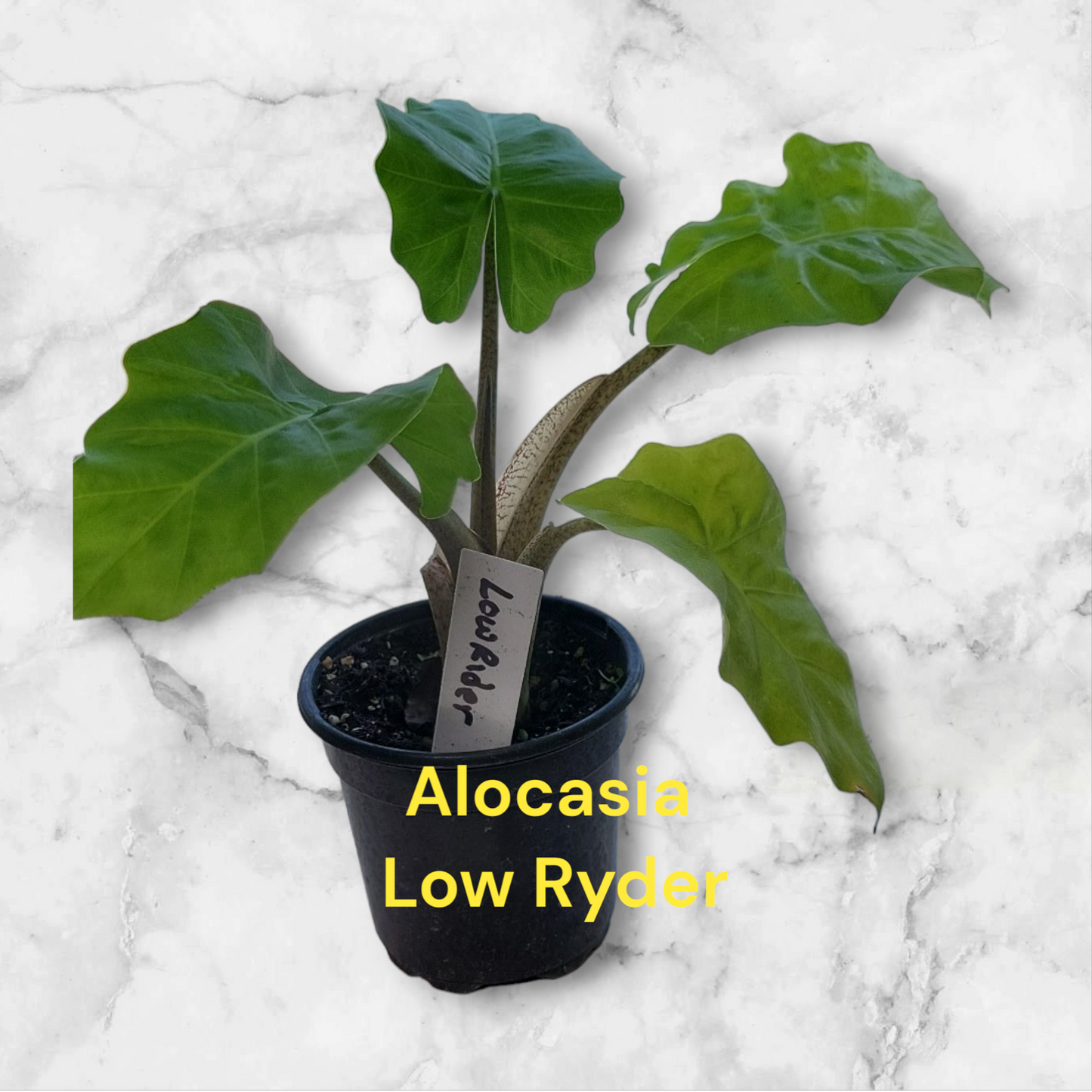The Alocasia or Elephant Ear is easily recognizable by its heart-shaped or arrow-headed leaves with their distinctive downward curl. The leaves range in size from 8 to 35 inches, depending on the climate and the environment you place it in. If space is an issue for your homescape, the “Low Rider” Alocasia grows to only 2 ft. high.
The Alocasia loves sunlight, and will do well indoors as long as you place it in a bright spot that is not excessively dry. Make sure to clean its leaves weekly, and keep the soil damp, not soggy. Keep the plant out of pets and toddlers’ reach, as it can be toxic if ingested. If you keep the plant outside during summer, transition it gradually indoors for colder months.
Caring for your Alocasia
Alocasias add a touch of the tropics to any indoor or outdoor space. However, to keep your Alocasias thriving, it’s essential to provide them with the right care and environment. This comprehensive care guide will cover everything you need to know to successfully grow and care for your Alocasias.
Light
Alocasias thrive in bright, indirect light. Place them near a window where they can receive plenty of indirect sunlight throughout the day. Avoid exposing them to direct sunlight, as this can scorch their leaves. Inadequate light can result in leggy growth and loss of leaf coloration. If natural light is limited, you can supplement with artificial grow lights, ensuring they receive at least 6-8 hours of light daily.
Watering
Proper watering is crucial for Alocasias, as they prefer consistently moist but not waterlogged soil. Allow the top inch of soil to dry out between waterings, then water thoroughly until water drains out from the bottom of the pot. Ensure that excess water is drained away to prevent root rot. During the growing season (spring and summer), water more frequently, and reduce watering in the dormant season (fall and winter). Adjust watering frequency based on environmental conditions and the plant’s specific needs.
Alocasias thrive in high humidity environments. Aim for humidity levels between 50% to 60%. If your home has low humidity, especially during the winter months or in air-conditioned spaces, increase humidity levels by using a humidifier, grouping plants together to create a microclimate, or placing a tray filled with water and pebbles beneath the plant’s pot. Misting the leaves regularly can also help increase humidity, but avoid misting excessively, as this can promote fungal diseases.
Soil
A well-draining soil mix is essential for Alocasias to prevent waterlogging and root rot. Use a high-quality potting mix that is rich in organic matter, such as peat moss or compost, and perlite or sand to improve drainage. Alocasias prefer slightly acidic to neutral soil with a pH between 6.0 to 7.0. Repot your Alocasia every 1-2 years, or when the plant has outgrown its current pot, using a slightly larger container.
Fertilizing
Feed your Alocasias regularly during the growing season (spring and summer) with a balanced liquid fertilizer diluted to half strength. Apply fertilizer every 2-4 weeks to provide essential nutrients for healthy growth and vibrant foliage. Reduce or stop fertilizing during the dormant season (fall and winter) when growth slows down. Avoid over-fertilizing, as this can lead to salt buildup in the soil and cause leaf burn.
Pruning and Maintenance
Regular pruning and maintenance help keep Alocasias healthy and attractive. Remove any yellowing, damaged, or dead leaves promptly to prevent the spread of diseases and pests. Trim back overgrown or leggy stems to promote bushier growth and maintain the plant’s shape. Wipe the leaves with a damp cloth periodically to remove dust and keep them clean, allowing better light absorption.
Propagation
Alocasias can be propagated through division or by stem cuttings. To propagate by division, carefully separate the plant’s rhizomes when repotting, ensuring each division has roots and at least one healthy stem. Plant the divisions in separate pots with fresh potting mix, keeping them well-watered until established. To propagate by stem cuttings, select a healthy stem with several nodes, cut it below a node, and place the cutting in water or a moist potting mix until roots develop.
Pests and Diseases
Alocasias are relatively resistant to pests and diseases but can occasionally be affected by common houseplant pests such as aphids, spider mites, and mealybugs. Inspect your plants regularly for signs of pests, such as yellowing leaves, distorted growth, or webbing. Treat any infestations promptly with insecticidal soap or neem oil, ensuring thorough coverage of the affected plant parts. Maintain good airflow around the plants to prevent fungal diseases such as leaf spot and root rot.

